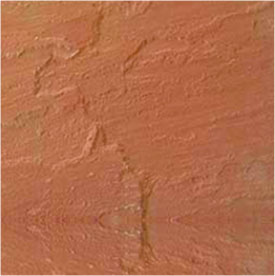What type of stone is limestone?
August 22, 2023 Admin
The term “limestone” is used to describe a variety of various stone formations formed with the same primary ingredient: calcium carbonate. True limestone is created by the precipitation of water from springs and other bodies of water, which leaves behind calcium-like minerals that subsequently layer to form limestone.
Limestone has mostly been utilised in construction and building operations over the years as aggregate in concrete, as well as being ground up with resins to form engineered stone, among other things. However, the stone has also been used to walls, countertops, and tiles.
Limestone’s fossilized animals may produce patterns that appear natural and have a distinct aesthetic reminiscent of ancient shells, plants, and skeletons. The bulk of fossils in limestone originate from marine species, such as coral, sea snails, and more, which enhances the stone’s look of being under the water.
What is a limestone?
For a stone to be categorized as limestone, it must contain at least 50% calcium carbonate. The many minerals that make up limestone affect the stone’s density and porosity, and the chemical makeup also affects the stone’s color.
Limestone is known to include fossilized elements inside its development. These fossilized remains are from ancient plants and animals that ultimately transform into sedimentary rocks and provide us with a window into the prehistoric world’s natural environment. Animal bones, shells, and even plant veining can all be seen in fossilized limestone.
Limestone’s fossilized animals may produce patterns that appear natural and have a distinct aesthetic reminiscent of ancient shells, plants, and skeletons. The bulk of fossils in limestone originate from marine species, such as coral, sea snails, and more, which enhances the stone’s look of being under the water.
Looks
Depending on the mineral makeup of the stone, Indian limestone can range in color from white to beige and even hues of green. The stone typically comes in shades ranging from cream to grey, however, gold variations are also available. Additionally, there are peach, yellow, and blue-grey hues that can be employed as accents.
Because limestone is so highly porous, its texture is comparable to that of concrete. In comparison to other stones like granite and slate, the stone is less firm due to its porosity, giving it a rougher texture. Due to the surrounding dissolved minerals, raw limestone may feel powdered.

Limestone’s fossilized animals may produce patterns that appear natural and have a distinct aesthetic reminiscent of ancient shells, plants, and skeletons. The bulk of fossils in limestone originate from marine species, such as coral, sea snails, and more, which enhances the stone’s look of being under the water.

Major Features of Limestone
The stone’s resilience to heat is one of the limestone’s much-desired features. When used as kitchen worktops, the stone may be utilized safely for food preparation and is unaffected by hot pots and pans being placed on it. Limestone countertops supplied by leading limestone exporters often have a penetrating sealer to keep the surface clean, although the stone is quite soft and porous.
Limestone may reinforce materials like cement and concrete when it is utilized as a building material. Low-grade limestone, which contains more clay than higher-grade limestone, is frequently used to make cement mixes. Limestone goes through a chemical reaction during the hydration process, creating a substance that is hardened when dried.
Applications of Limestone
Limestone is mostly utilized in construction as an aggregate for concrete buildings. Indian Limestone is frequently used in industrial settings because it is simple to process and pulverize into the necessary ingredients. With the exception of eco-concrete, the majority of concrete components will contain limestone or substances that resemble limestone.
Limestone may be used as worktops, wall tiles, and flooring, but it requires a strong, penetrating sealer to shield it from damage and keep stains from staining the stone permanently. Limestone may also be utilized to make beautiful items, especially when it comes to limestone rocks with pronounced fossil patterns.

Limestone Care
When used as a countertop, tile, or flooring, limestone requires a lot of care. Acidic solutions will readily dissolve limestone due to its high calcium carbonate concentration, and when an acidic solution is applied directly to the surface, a bubbling reaction will take place. To prevent damage to the stone, it is advised to coat limestone with a penetrating varnish.
Additionally, if the stone is left open, moisture can enter into its pores. Avoid using abrasive cleaning equipment to scour the surface since the soft stone is prone to scratching quickly. To protect limestone against deterioration from moisture and grease, it should be sealed along with the grout.








